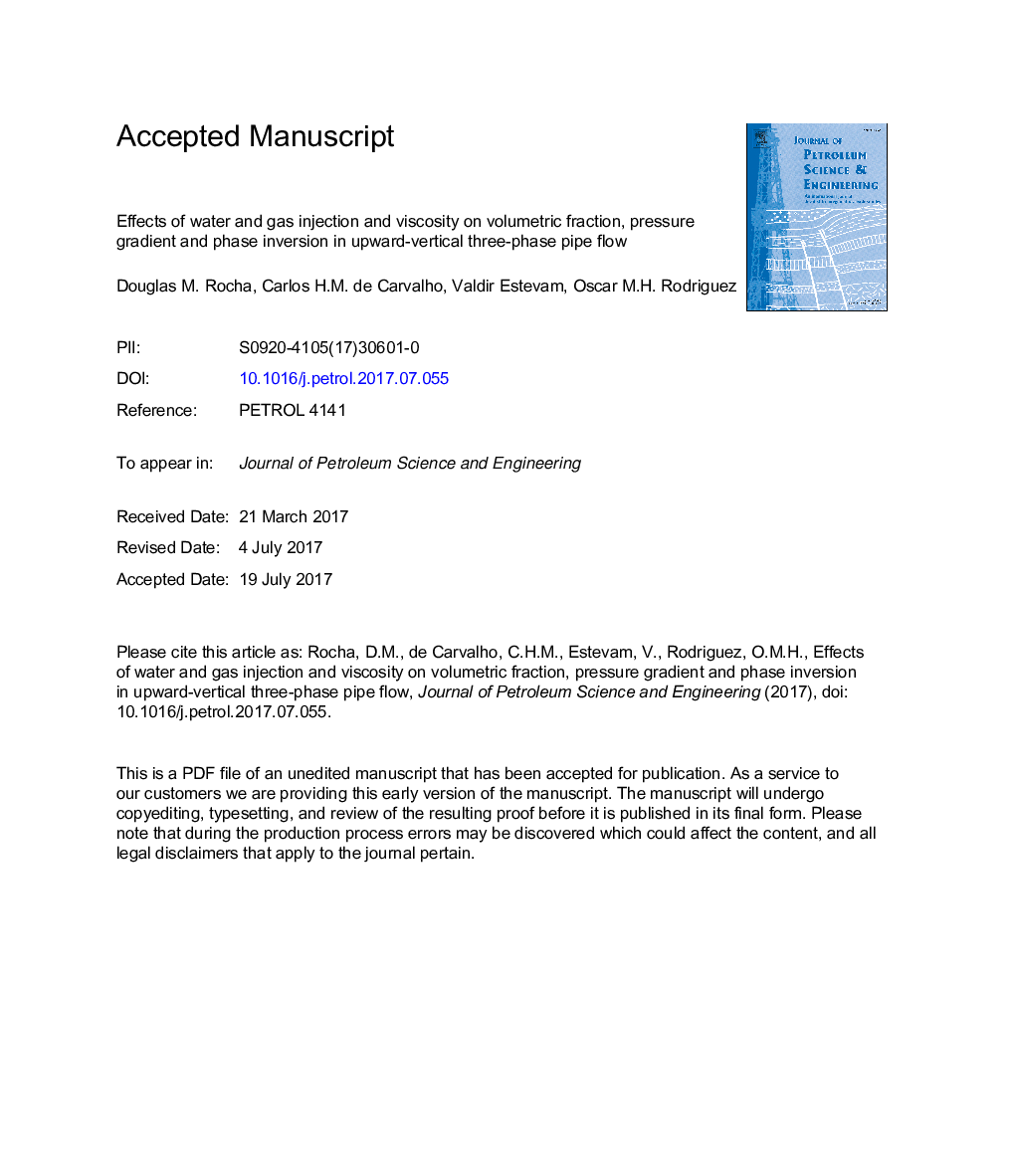| Article ID | Journal | Published Year | Pages | File Type |
|---|---|---|---|---|
| 5483969 | Journal of Petroleum Science and Engineering | 2017 | 42 Pages |
Abstract
The natural and artificial presence of water and gas is common in the offshore oil production scenario. In the last years, several studies on two-phase flows of viscous oils proved that the water and gas addiction is very efficient in the frictional and gravitational pressure-gradient reduction. In recent works, the oil-water-gas three-phase flow showed promising results in the total pressure-gradient reduction. However, the works on three-phase flow are not as conclusive as those on two-phase flow. In order to better understand the phenomenology of the upward-vertical three-phase flow, new experimental data are presented in a wide range of flow rates of gas, water and oil with three different viscosities (100 mPa s, 220 mPa s and 325 mPa s). The gains obtained by gas (air) and water injection were quantified by pressure-gradient reduction factors. A new flow-pattern classification in three-phase flows is proposed as a function of water and gas superficial velocities. Furthermore, analyzes were performed about the volumetric fractions, the slip between the liquid phases and the applicability of the drift-flux model in three-phase flow. The results indicate that the total pressure gradient in three-phase flow can be considerably lower than in single-phase and two-phase flows; therefore, a profound understanding of oil-water-gas three-phase flow is in order if one intends to improve the oil production in vertical wellbores.
Related Topics
Physical Sciences and Engineering
Earth and Planetary Sciences
Economic Geology
Authors
Douglas M. Rocha, Carlos H.M. de Carvalho, Valdir Estevam, Oscar M.H. Rodriguez,
